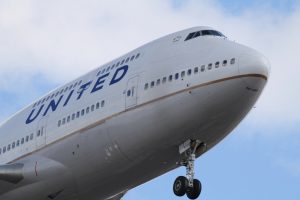United Airlines, in response to the reaction to the Flight 3411 incident, has come up with a plan to make sure it never happens again. Some of its new procedures were previously announced, such as not using law enforcement to remove passengers from planes except in cases of safety. However, many are new and important changes that should be copied by Delta, American, and indeed all airlines.
Key here is empowering the airlines’ employees to take whatever action necessary to help passengers who must be involuntarily bumped. This includes putting them on another airline’s flight which United should have done to begin with; there was a 9:00 PM Southwest flight from Chicago to Louisville on the fateful evening in question that might have had one seat for Dr. Dao, or there was an 8:50 PM flight to nearby Lexington, KY on United from O’Hare. But none of these solutions were explored, or if they were, they were not addressed in United’s original explanations about what happened. (United spokesman Jonathan Guerin told me yesterday by phone that this would have made a lot of sense. “When I fly non-revenue, I always look at alternate airports,” he said. Perhaps under the old rules, gate agents weren’t allowed to use other airports or airlines.)
What’s good here:
The airline for the first time spells out exactly how they choose passengers to be involuntarily bumped. I don’t believe any airline has done this so specifically. Consumers now know how to better protect themselves.
Passengers without a seat assignment get bumped first, followed by fare class and estimated fare paid, followed by time of check in, followed by frequent flyer status. Those with special needs do not get bumped.
It increases maximum compensation for voluntary bumps to $10,000 which should make involuntarily bumps extremely rare, although there will always be passengers who will not miss a wedding or funeral even for $10,000. (Maximum payment for involuntary bumps is regulated by the DOT and remains the same).
It empowers personnel to use competing airlines to transport bumped passengers (similar to the old Rule 240 which airlines were once required to include in their contracts of carriage)
It promises to be more careful overbooking specific flights where United has experienced difficulty in getting passengers to volunteer their seats, especially on last flights of the day or where there are no good alternative airports to fly into.
It promises not to use law enforcement to remove passengers already seated unless it’s a matter of safety.
Although entirely unrelated to bumping, it adds the sweetener of refunding a flat $1,500 to any passenger whose bags are lost without requiring receipts, filling out forms, or depreciation of contents (higher claim amounts will need receipts and forms)
Also unrelated to the original incident, the airline is empowering ground and cabin crew to fix (non-bumping) service problems with frequent flier miles or other compensation on the spot.
HOWEVER… If United really wanted to win back customers and become the airline of choice, it could do three additional things:
Follow Southwest’s example to offer fare drop refunds if a fare goes down after purchase (in the form of a travel voucher). It once did this, as all airlines once did. Bring this back.
Make the vouchers for voluntary bumps last longer than one year of validity (most people fly just once a year if that).
Bring back Rule 240 (i.e., commit to placing passengers inconvenienced by delays or cancelations within the airline’s control, on a competing airline if that airline can deliver the passenger to the final destination sooner than United’s next available flight, even if only first class is available on the competitor)
I don’t see those additional improvements happening, but much of what United proposes to fix, although very welcome, are catch up measures; to really get attention and make itself a better airline in the eyes of consumers, to really wow them, it needs to do even more.






